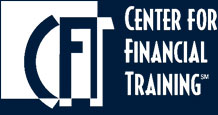You’ve analyzed the risks, written the policies, and developed the procedures for each area of consumer compliance. But, are they effective? Are they working? Are they being followed? Is our institution truly in compliance? Those are all questions you want to be answered before the next visit by your examiners.
Your institution’s safety and soundness are contingent upon effectively identifying and managing your Compliance Risk exposures. Thus, your Compliance Audit program must be risk-based and focus on those areas of greatest risk. Each of your institutions is unique from the market you serve to the products you offer to the method you deliver them, therefore, no single compliance audit system works across the board. Each institution should develop its own program tailored to its needs and circumstances. Regardless of the compliance audit/risk management programs design, it should include mechanisms for identifying, measuring, controlling, and monitoring risks.
In this session, we will review examiner expectations for your Compliance Audit program. We will highlight those areas of compliance with the highest risk, so you know where to focus your valuable time. In addition, we will provide examples and tools you can incorporate into your program.

